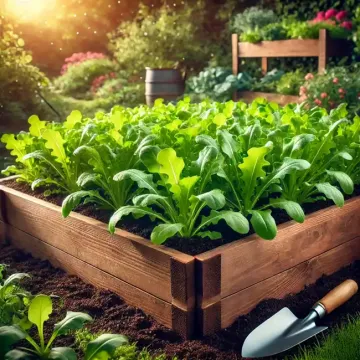History of Arugula Arugula has been cultivated since ancient Roman times and was considered an aphrodisiac. It is believed to have originated in the Mediterranean region and has been a staple in Italian, Greek, and Middle Eastern cuisines for centuries. In addition to its culinary uses, arugula was also used for medicinal purposes, with ancient cultures using it to aid digestion and as a remedy for various ailments.
Health Benefits Arugula is a nutrient-rich leafy green packed with vitamins and minerals. It is an excellent source of vitamins A, C, and K, as well as folate and calcium. Arugula is also high in antioxidants, which help protect the body against free radical damage. Its glucosinolate content contributes to its distinct flavor and has been studied for potential cancer-preventive properties. Additionally, arugula's low calorie and high fiber content make it a great choice for those looking to maintain a healthy diet.
Culinary Uses Arugula is incredibly versatile in the kitchen. Its peppery flavor makes it a perfect addition to salads, providing a sharp contrast to milder greens like lettuce and spinach. Arugula can be used as a topping for pizzas, tossed into pasta dishes, or mixed into sandwiches and wraps. It also pairs well with citrus fruits, cheeses, and nuts, making it a popular choice for gourmet dishes. For a milder flavor, baby arugula can be harvested early, while more mature leaves will have a stronger taste.
Growing Tips Arugula is one of the easiest greens to grow in a home garden. It thrives in cool weather, making it ideal for spring and fall planting. Here's how to grow arugula successfully:
- Planting: Arugula prefers well-drained soil and can be grown in full sun or partial shade. Direct sow the seeds about 1/4 inch deep and space them 1 inch apart. Thin the seedlings to about 6 inches apart to allow room for growth. Arugula can also be grown in containers, making it an excellent option for small spaces or urban gardening.
- Watering: Keep the soil consistently moist, but not waterlogged. Arugula has shallow roots, so regular watering is essential, especially during dry periods. Mulching around the plants can help retain moisture and keep the soil cool.
- Fertilizing: Arugula is a light feeder and usually does well without much additional fertilizer. If your soil is nutrient-poor, you can add compost or a balanced fertilizer before planting to ensure healthy growth.
- Pests and Diseases: Arugula can be susceptible to pests like flea beetles, aphids, and slugs. Row covers can help protect young plants from pests. Additionally, practicing crop rotation and avoiding planting arugula in the same spot year after year can help prevent soil-borne diseases.
- Harvesting: Arugula grows quickly and can be harvested as early as 20-30 days after planting. You can either pick individual leaves as needed or cut the entire plant when it reaches about 6 inches tall. Harvesting in the early morning will provide the best flavor. Regular harvesting will encourage new growth and prolong the harvest season.
Conclusion Arugula is a delightful and nutritious green that is easy to grow in the home garden. Whether you're a seasoned gardener or a beginner, arugula offers a quick-growing, flavorful addition to your garden that can enhance your meals throughout the growing season. Its peppery taste and health benefits make it a valuable crop, and with the right care, you'll be rewarded with a bountiful harvest of this vibrant leafy green.

